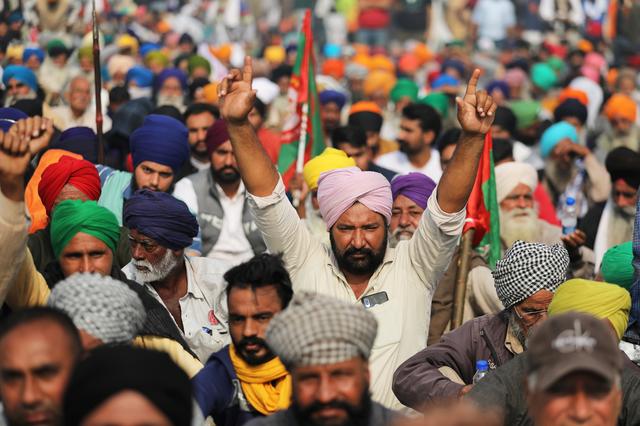This post was written for Escape Velocity Blog and first appeared there.
A lot of data has passed through the Jio network since we wrote the last post on Jio in September ’16. More than 100 crore GB of data which by their own yield estimate of Rs.50/GB, is Rs. 5,000 crore of revenue lost for someone! In a little less than a day, the data freebie on Jio ends and it will become a paid service. In a few days after that, we’ll know what this massive freebie translated into, in terms of new customers and their value.
I’ve been using Jio for the last 5 months, first as a secondary mobile connection primarily for data (my guess is that most people who are still are using it, are doing the same) and now as my primary and only mobile connection. Hence, I’m mentioning below my opinion about a few things that I think have worked for Jio, and a few that have not, both from an end-user’s perspective and a marketers’.
First, what worked :
- Freebie and Prime strategy: The freebie strategy worked, and how ! Jio crossed the 50 million subscriber mark in 83 days, something its competitors in India took more than 12 years to touch. Then, in another 87 days they hit the 100 million subscriber mark. When competitors tried hard to match the initial tariffs / plans that Jio announced, Jio overwrote them with new Prime membership plans. Pricing annual Prime membership at a rock-bottom Rs. 99 ensured that they enrolled 50 million subscribers within a month and before the current go-live date of 1st April for paid services. So, on launch day, it might well have the highest number of mobile broadband users in India (Airtel, India’s largest telecom operator had between 41-60 million 3G+4G customers in 2016 according to various News reports). The Prime plan with low data tariffs has also ensured that they have a good chance of locking in customers for another year, experiencing and testing their network while Jio irons out issues.
- Unique customers / minimum duplications: Using the MyJio app and generating a unique barcode per device they’ve ensured – to a large extent – that there is only one Jio connection per phone / IMEI number. The unique barcode per phone and Aadhar based eKYC means Jio has very accurate knowledge about who their live customer is. This enables them to actually track ARPU (per user) rather than ARPU (per SIM) which is what the industry is compelled to track now. Remember, India has more than 12 billion telecom subscribers (November 2016) which is about 1.2 SIMS per phones in circulation (~760 million phones in circulation). Millions of disconnections happen when the regulator comes up with new rules for subscriber verification or when operators decide to clean up their Virtual Location Registers (a database of all the SIM cards being serviced on their network). By Jio’s own estimates the active SIMs will reduce by 330 million to 800 million with no voice arbitrage within a short time.
- LYF smartphones: In 2016, Reliance Retail launched their own brand of smartphones called LYF. Prices of these phones started from a very competitive Rs 3,999 and were probably aimed at pushing 4G phones into India (“fuelled the 4G ecosystem” in Jio’s own words). By Q3-CY 16, they started bundling free Jio SIMs and apps on these phones giving them a good base of customers who stress tested their network and service infrastructure. In that quarter, LYF smartphone share crossed 7% by volume and became the #5 brand of smartphone in India. More importantly, competition caught up, now all smartphones shipped in India are LTE enabled with 7 out of 10 being 4G enabled. That’s some good groundwork and substantial base for Jio’s 4G network.
- JioMoney tie-up with the Uber: In February, Uber and Jio announced a strategic partnership enabling payment of Uber trips using Jio’s mobile wallet JioMoney. Till then, Paytm was the only wallet option on Uber India and for Paytm, Uber was one of its biggest merchants, if not the biggest. While Jio gives out numbers of its mobile subscribers, it doesn’t give out details of adoption of their apps – which seems to be a small proportion of their user base (Google Play store indicates between 10-50 million installs of the Jio app while it’s greater than 50 million installs for Paytm). Uber gives Jio users a strong reason to migrate to using the Jiomoney app which will play a critical role for growth of Jio’s other media services apps – currently Jio is giving out free content worth over Rs. 10,000 per year to each Prime user.
What hasn’t worked and needs improvement:
- Jio4gvoice app: This was a master stroke and a necessary evil for acquiring more customers – there are already 124 million LTE devices, not all of them VoLTE capable – but one that has the maximum potential to alienate them too. Jio4gvoice is essentially a voice calling app that enables non-VoLTE (4G-LTE) devices to be used for making calls on the Jio network. When I checked the Google play store last, there were more than 50 million installs of this app (almost a proxy of how many non-VoLTE devices are being used on their network). On these phones, this app has to be always connected to their data network, to make and receive calls and SMSes and this drains the battery quickly. Added to this, every new update brings a fresh set of bugs with it. And because it is the only way to make a call on Jio with non-VoLTE phones, any bugs in this app are the first to be noticed and the most frustrating aspect of Jio.
- Network and Speeds: Jio might have the ‘capacity to carry 100% of India’s voice traffic’ or claim to have the ‘lowest call drop in Industry’ and offer the ‘BEST experience’. But, my experience has been quite contrary to these claims. On the move, the network has disconnection and connection issues leading to frequent call drops and inability to call back quickly. In locations like airports, they have serious network issues. JioNet could have helped in such high traffic areas, but it hasn’t been rolled out adequately and has since dropped from prime plans. As far as being the world’s largest data network goes, rarely have I obtained speeds above 1 Mbps.
- Call connection issues: It’s common knowledge now that Jio faced issues connecting calls to users of other networks as they didn’t get sufficient points of interconnect’s (PoIs) from other telecom operators. Though the busy hour call failure rate has dropped from the highs of 88% when they launched in September, it still hovers between 8-12% (Jio publishes data on their website on a daily basis). It is really frustrating that even after 6 months, a fair bit of this issue remains. Once Jio becomes a paid service, if this issue persists, it is going to cause more agony to customers.
- Customer service: I’ve already mentioned in my last post that the experience with Jio at customer touchpoints hasn’t been satisfactory. My aggravation with this increased last month. I had to make multiple visits to their store as well as make multiple calls to their call center to get clarity on some issues. Every time I was given a different answer, and many a times an incorrect one. Then there are other basic processes which don’t work – for example, DND activation via their app doesn’t work.
- Finally the Marketing:
- Relentless communication to existing user base: Either their CRM back-end has not been integrated to the payment back-end, or it is not synced frequently enough, or their marketers, data analysts and programmers are being plain lazy. Whatever the reason, existing users – even those who have enrolled into plans – have been bombarded with 100s of messages and push notifications (many of them incomplete) asking them to enrol into one of the various plans. People might ignore them as long as they are getting stuff for free, once they start paying, it’s a different expectation altogether.
- Advertising: They had a pug, a zoo-zoo and a catchy jingle / catchphrase as benchmarks to beat. What do they come up with? Flying balloons – lots of them! No wonder it made it to the bad set of the annual list of the best and the bekaar ads.
While it has got a number of things right, a couple of the above are real deal breakers. No network or frequent network disconnections and low speeds are going to turn off people even if they’ve subscribed into dirt-cheap prime plans. And it’s a matter of time before competition cuts their prices to a reasonable level and offers superior services.
Will voice services become a non-differentiator? Will data explosion start and / or continue with commencement of paid services of Jio? Will Jio be able to meet its grand 2021 vision of capturing more than 50% of the 3 lakh crore data market it is projecting ? A close watch on how these tactics by the incumbents and Jio play out through the rest of the year will give us a fair guesstimate.
Update (a day after this post):
Just as you thought the freebies won’t end, they’ve extended enrolment for prime till April 15th. This is probably because they could only enrol 72 million so far.
Then the free service goes on till July 1st. While they say this is to enable Jio customers to fully familiarise Jio customers with their services and enable digital payments for further purchases, I think the problem is somewhere else. 1 lakh towers will be added to the 1 lakh towers already existing in the coming months. There are “small pockets of congestion” on the network impacting service quality.



